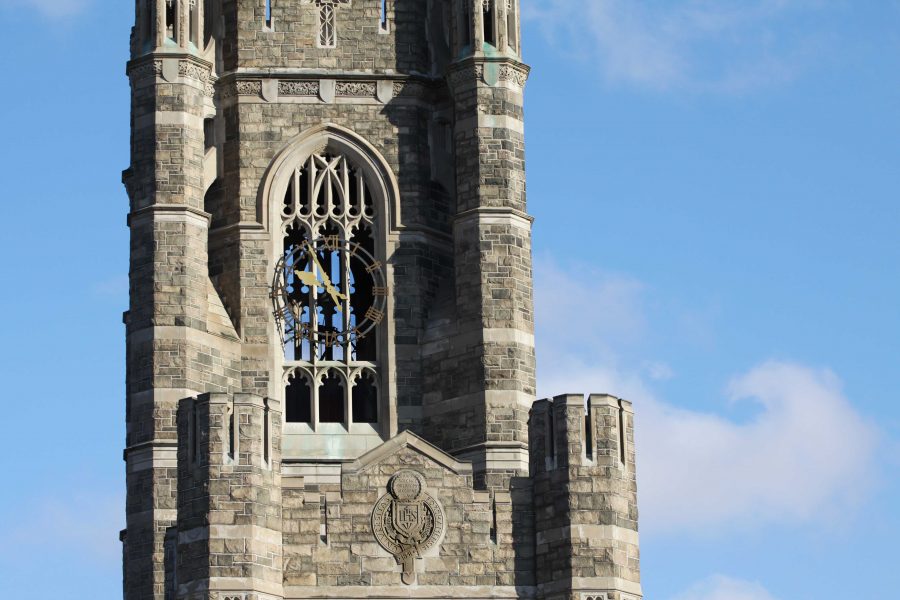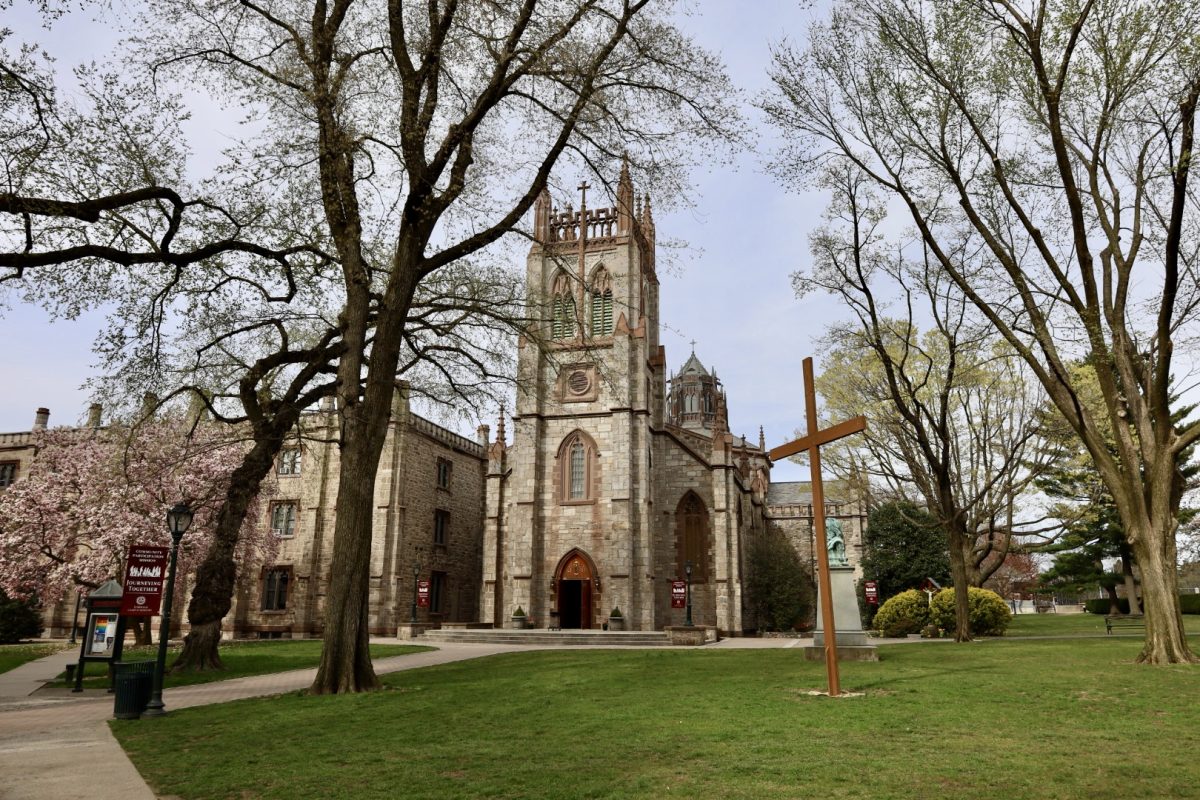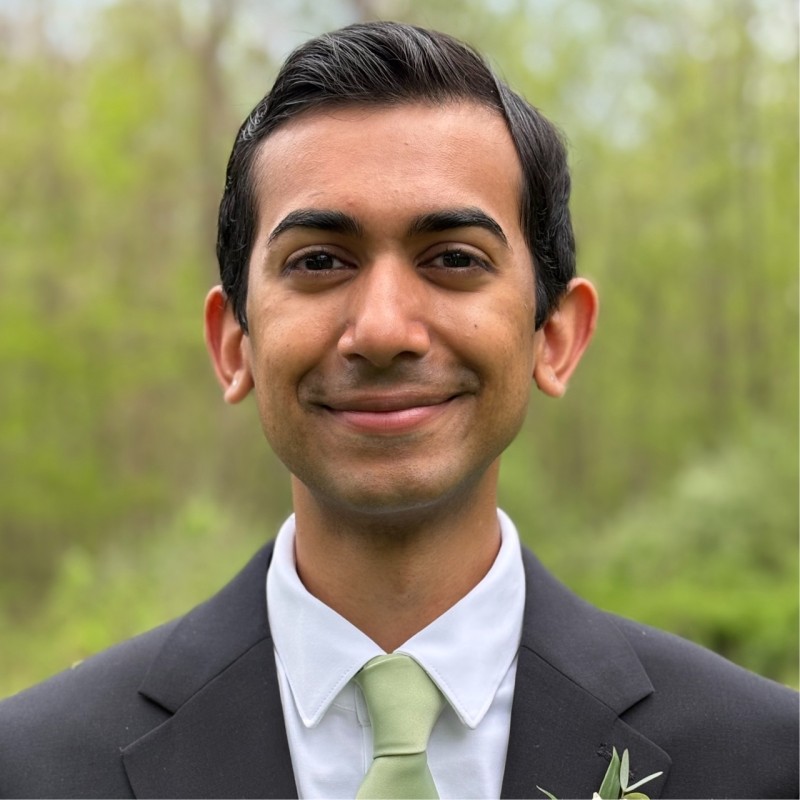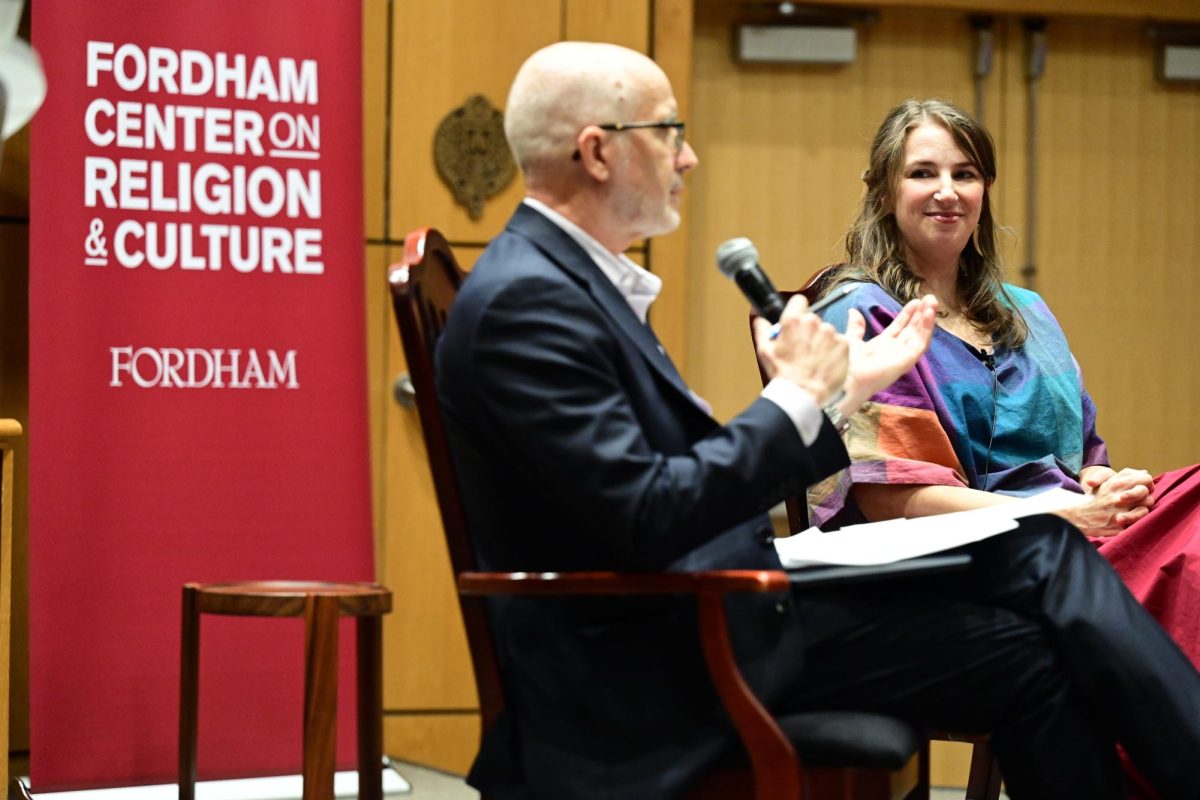By Joe Vitale
The United Student Government (USG) election results have been announced and the student body will now be represented by a group of leaders for whom many did not vote.
Though nearly 6,000 students are eligible to vote, only about 600 did. Not that the low turnout had any major effect on who won: Only two races were contested.
On a single ticket, only two students threw their name into the hat, essentially signing up to be executive president and vice president of USG.
The implications of this are not entirely clear for USG or Fordham students. But what is apparent is that the situation is not new for Fordham’s student government.
In year’s past, USG has seen its fair share of uncontested races and low turnout.
In 2013, 700 students voted in an uncontested race for the top ticket, allowing Aileen Reynolds, FCRH ’14, and Brendan Francolini, GSB ’14, to claim the top roles without any competition.
Last year, a contested race for the executive ticket saw a spike in votes, topping out at about 1,000 cast. Still, the race ended in a decisive victory. The current student leadership, Nevin Kulangara, GSB ’15, and Sarah Skrobala, FCRH ’15 captured more than 60 percent of the vote.
This year’s executive race was not the only uncontested race. Vice presidents of operations, student life and health and security were all uncontested races, as were those for VP of GSB and FCRH. Several senate seats remain unclaimed, and a number of students currently on USG declined to run for office again.
Of the two contested races, only the contenders for the VP of Finance debated during USG’s public session last week. The seat was ultimately won by Daniel Stroie, FCRH ’17. The other contested race — for VP of Communications — was claimed by TJ Strazzeri, FCRH ’16.
Given there is no minimum threshold for candidates and no requirement for students to vote, the problem seems likely to continue if there is not a change in policy or a spike in student interest.
With that in mind, student leaders in USG seem to be aware of a seemingly low student interest.
“I think uncontested races absolutely hurt the image of student government,” said Kulangara, whose term is ending this May. “Elections are probably when the buzz around USG is greatest during the year, so a lack of campaigning and debate definitely limit our reach across the student body,” he said.
Kulangara also expressed the sentiment that uncontested races can give the appearance that USG positions are given, not won.
“Uncontested races also give students the impression that USG positions are essentially handed down, and that the rest of the student body has no say in who will represent them in the future,” he said.
For what it is worth, this alleged “apathy” extends far beyond Fordham’s campus. For decades, college papers have criticized their student governments, while many scholars have even deemed it a topic of study, leading to books with titles such as “Motivating the Middle: Fighting Apathy in College Student Organizations” (2011) and “Generation at the Crossroads: Apathy and Action on the American Campus” (1995).
These works, and many similar writings, have posed the same questions, essentially asking if college students are up to facing the challenges of their generation.
Some have raised questions about young people’s interest in their governmental representatives overall. Voter turnout among youth continue to be the lowest age demographic. Twenty two percent of people ages 18-29 voted in the 2014 midterm elections, according to The Center for Information & Research on Civil
Learning and Engagement (CIRCLE). The amount of young voters in most presidential elections has hovered around 45 percent for the past few decades.
Christopher Rodgers, dean of students, sees lacking student involvement as a challenge for student government, but applauds the current candidates as hardworking students.
“I was honored to administer USG’s oath of office just last night, but over the years have seen firsthand that President Domagola and Vice President Sawicki are possessed of impressive experience, work ethic and leadership skill,” Rodgers said in an email.
“We look forward to working with them in the coming year and I would encourage more of our students to show the same commitment to the hard work of leadership that I see with the incoming USG executive board and Senate,” he continued.
Of the newly elected USG leaders, Rodgers said: “They not only talk about change but have dedicated their time to achieving it by stepping up to put in the work change always entails.”
Still, the hitch rarely escapes the attention of critics of student government, namely student press. Without fail, The Fordham Ram has criticized students for not vying for positions on USG.
Nearly every year the paper not only publishes an editorial encouraging students to get out and vote, but publishes a follow-up editorial groaning about low voter turnout.
During the 1964 studeng government election, the editorial board complained that there was just one sophomore party running for junior office. “Only one party as of last evening at 5 had petition for candidacy in the Student Government elections,” the editorial board wrote in its print edition.The piece went on to express disdain for an apathetic sophomore class that would “ruin” the student body’s reputation.
“Even though its members may be the best qualified to run, the only party ballot removes the driving force competition and denies voters a choice of issues and/or personalities,” the article stated. “It is extremely important that there [is] more than one party in contention.”
Skip ahead to 1995 and the mood was identical. In an editorial, this newspaper’s editors complained about low turnout at the latest election.
Noting that a 24 percent voter turnout was the highest polling number in the past few elections, the board said the number is still “inadequate.”
Kelly Kultys, FCRH ’15, who served as editor-in-chief of The Ram during its previous volume, covered USG for the news section for two years. Today, she calls the low turnout “concerning.”
“I think that’s due to the lack of contested races but it’s still concerning to me that there’s minimal turnout for the people that are supposed to be representing the student body,” Kultys said in an email.
“It’s hard to take people seriously when they complain about student government and then they don’t run or even vote,” she added.
Connor Ryan, FCRH ‘15, who served as editor-in-chief of The Ram two volumes ago, covered the elections as an editor and continues to cover USG elections through his online blog, Fordham Daily.
There, he has criticized the group for the high number of uncontested races this year. “For an organization that has worked hard this year to infiltrate the campus culture, this election is a clear signal that something just isn’t working,” Ryan wrote in an opinion article this month.
Speaking with The Fordham Ram, Ryan suggested it was a detriment to campus life.
“It was disappointing to see so few contested races this year, and not at all surprising to see a substantial drop in voter turnout,” Ryan said in an email.
“Ultimately, uncontested races hurt the student body because it means people have less control over who’s representing them in front of administrators.”
Noting fluctations, Ryan suggested that uncontested races might be more indicative of a constantly changing student body than a constantly apathetic one.
“Last year was a great election, this year was a bad one,” he added. “Maybe next year will be great again. The rotating door of class years changes the student government dynamics from year to year.”
In 2013, the editorial board (which included Kultys and this reporter) published one of its most annoyed editorials in recent memory.
“Massive indifference allows the whole student body to be taken advantage of,” the editors said.
“Silence, and failure to vote,” they concluded, “is a missed opportunity.”








































































































































































































